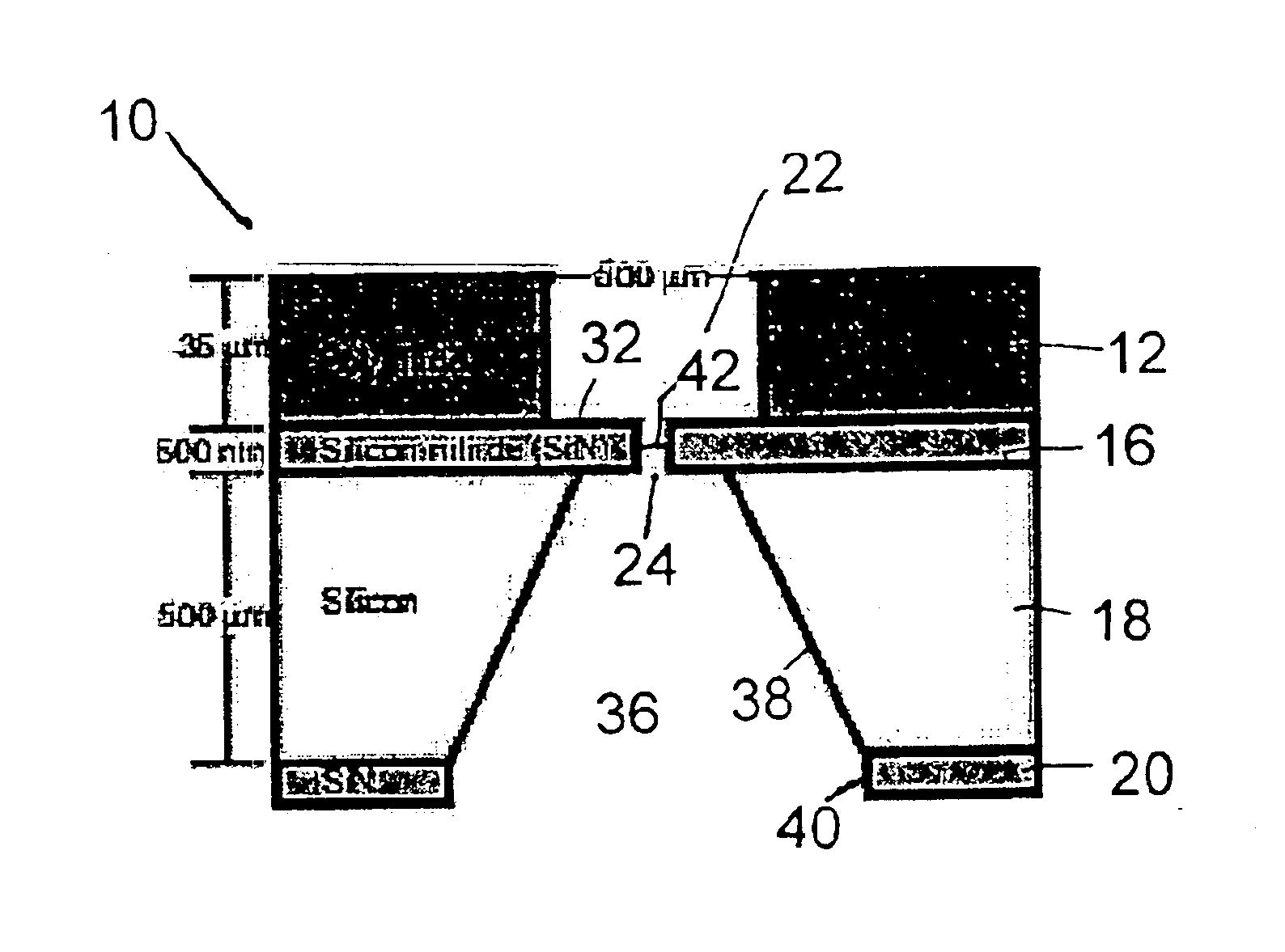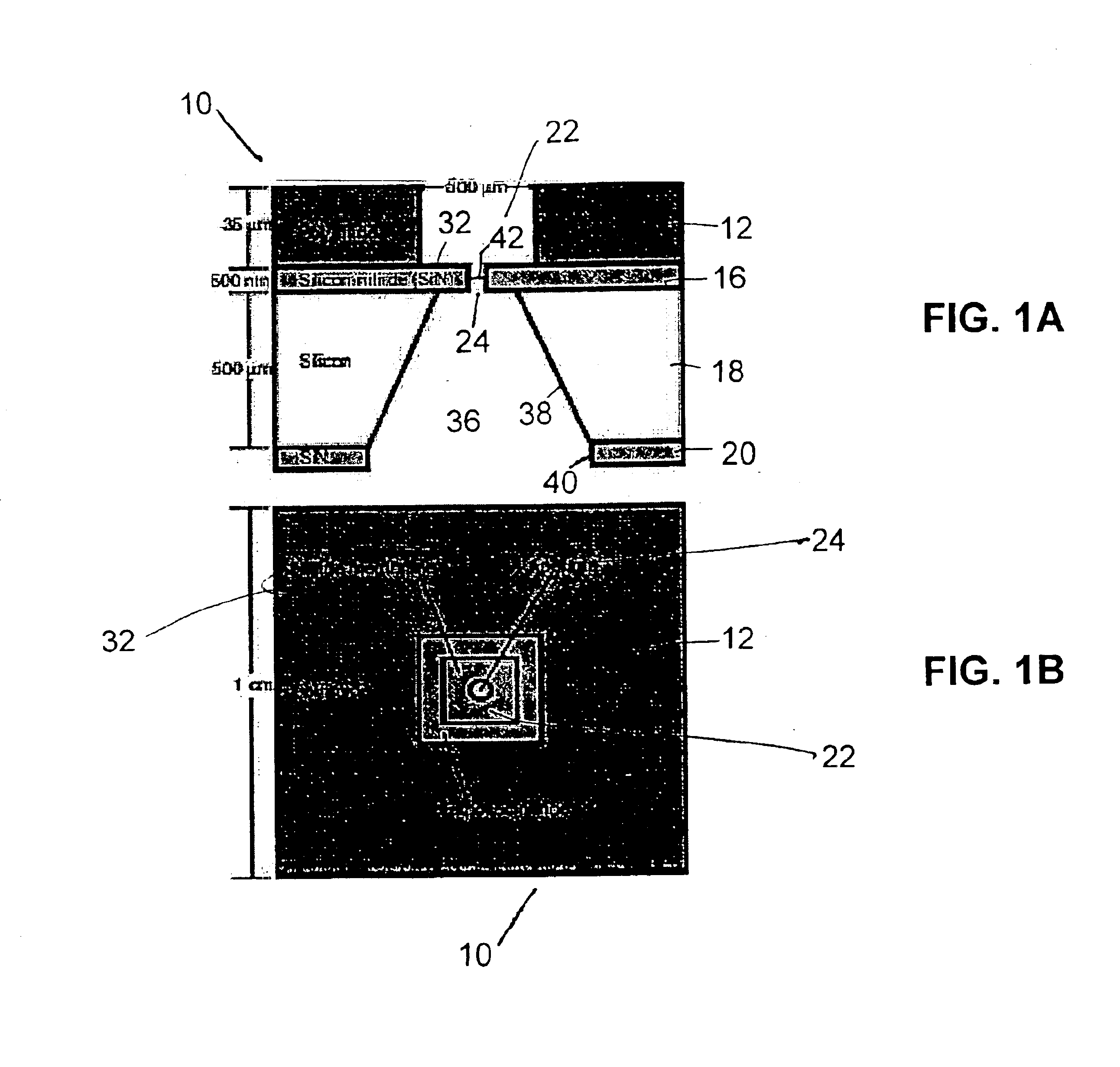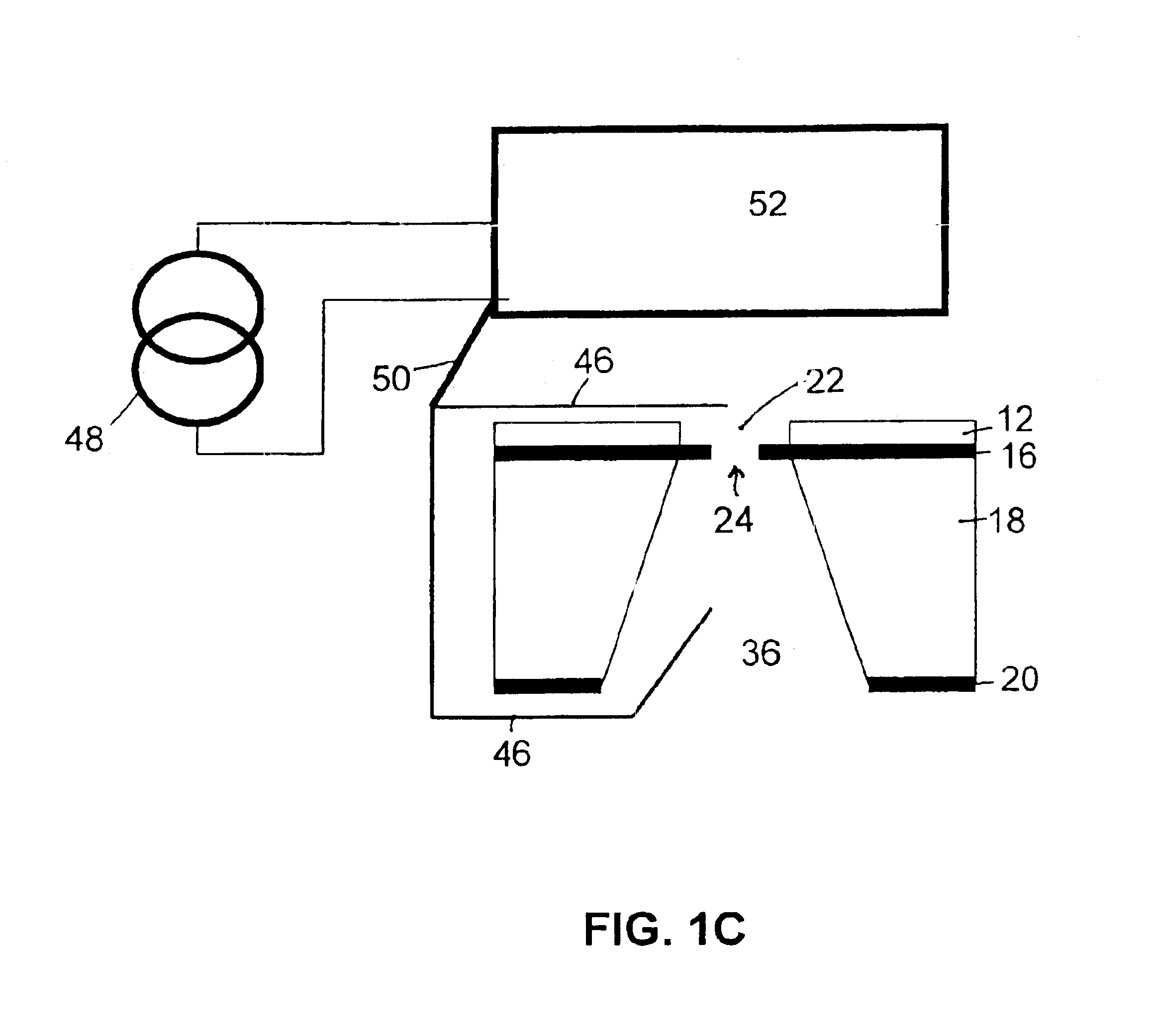Microfabricated apertures for supporting bilayer lipid membranes
a technology of bilayer lipid membranes and microfabricated apertures, which is applied in the direction of diaphragms, immobilised enzymes, electrolysis, etc., can solve the problems of uniform manufacture, inability to generally form features smaller than 0.5 m, and inability to stabilize albms as membranes found, etc., to achieve greater control over experimental parameters, design simplicity, and the effect of greater control
- Summary
- Abstract
- Description
- Claims
- Application Information
AI Technical Summary
Benefits of technology
Problems solved by technology
Method used
Image
Examples
example 1
Microfabrication of Apertures
[0050]Microfabricated apertures on a silicon chip surfaces have been made using the Stanford Nanofabrication Facility. Microfabricated wells with microfabricated apertures are shown in FIG. 2. Silicon processing techniques were adapted for producing micrometer and nanometer-sized apertures in a silicon nitride membrane (large features and small features). Using low-pressure chemical vapor deposition (LPCVD), a thin layer (500 nm) of silicon nitride was grown on the surface of orientation silicon wafers. A combination of lithography to define the structures in a photosensitive polymer was followed by plasma etching to pattern the structures in the silicon nitride-created apertures on one side of the wafer and an etchant masking layer on the other side. An anisotropic etchant, such as tetramethylammonium hydroxide (TMAH), was used to remove the silicon along the {111} crystal plane, but leave the silicon nitride unaffected. This produced a via hole (a con...
example 2
Device Fabrication and Optimization
[0059]This Example describes the manufacture and optimization of devices embodying features of the invention for use in forming bilayer membranes across the microfabricated apertures of the devices. Nanoaperture chips were made with surface areas of about 1 cm2 and with a final thickness of roughly 0.5 mm. Circular apertures of 25 μm through 250 μm (diameter) were plasma etched in 500 nm thick silicon nitride. The chips were covered in a thick polyimide, except for a square region of exposed silicon nitride 500 μm on a side.
[0060]Fabrication was done at the Stanford Nanofabrication Facility (SNF) with 4 inch, orientation, boron-doped, double-polished silicon wafers, nominally 500 μm thick. Using low-pressure chemical vapor deposition (LPCVD), a thin layer (500 nm) of silicon nitride was grown on the surface of the wafers. Standard contact photolithography and plasma etching of the silicon nitride was used to define the small features (e.g., the ap...
example 3
Substrates with Multiple Nanoapertures
[0069]The techniques described in the previous example may also be used to produce silicon substrates having more than one nanoaperture. Multiple nanoapertures may be formed within a single recess on a substrate, or multiple assemblies each having a single or multiple nanoapertures within a single recess may be formed on a substrate.
[0070]A 4 inch, orientation, boron-doped, double-polished silicon wafer, nominally 500 μm thick, was used to form a nanoaperture chip having multiple nanoapertures within a single recess. Using low-pressure chemical vapor deposition (LPCVD), a thin layer (500 nm) of silicon nitride was grown on the surface of the wafer. Standard contact photolithography and plasma etching of the silicon nitride was used to define the small features (e.g., the apertures). One hundred twenty one 5 μm nano-apertures were formed in the wafer, in a square pattern having eleven nanoapertures on a side with the nanoapertures spaced 100 μm ...
PUM
| Property | Measurement | Unit |
|---|---|---|
| diameter | aaaaa | aaaaa |
| temperature | aaaaa | aaaaa |
| diameter | aaaaa | aaaaa |
Abstract
Description
Claims
Application Information
 Login to View More
Login to View More - R&D
- Intellectual Property
- Life Sciences
- Materials
- Tech Scout
- Unparalleled Data Quality
- Higher Quality Content
- 60% Fewer Hallucinations
Browse by: Latest US Patents, China's latest patents, Technical Efficacy Thesaurus, Application Domain, Technology Topic, Popular Technical Reports.
© 2025 PatSnap. All rights reserved.Legal|Privacy policy|Modern Slavery Act Transparency Statement|Sitemap|About US| Contact US: help@patsnap.com



